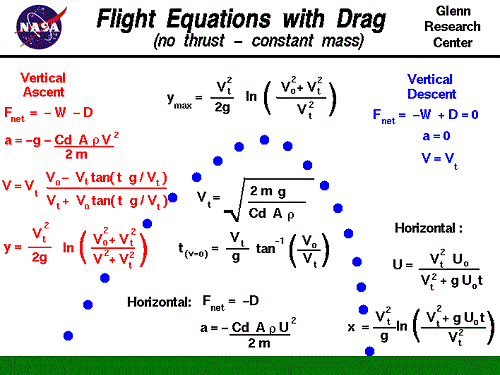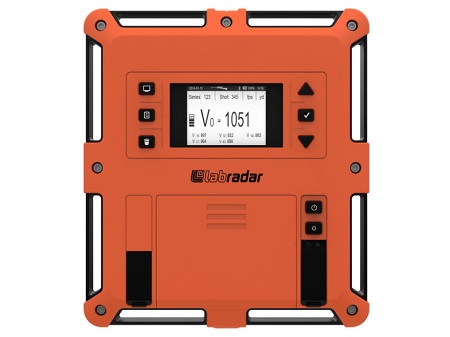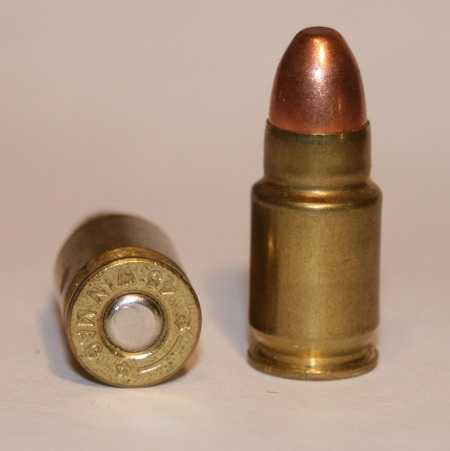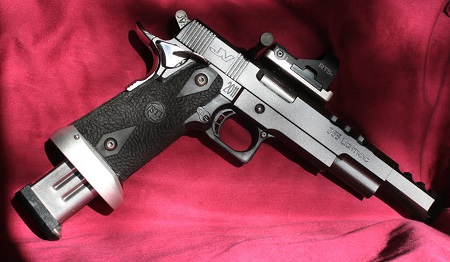Intermarkets' Privacy Policy
Donate to Ace of Spades HQ!
aceofspadeshq at gee mail.com
Buck:
buck.throckmorton at protonmail.com
CBD:
cbd at cutjibnewsletter.com
joe mannix:
mannix2024 at proton.me
MisHum:
petmorons at gee mail.com
J.J. Sefton:
sefton at cutjibnewsletter.com
Saturday Night Club ONT - January 17, 2026 [Double Play]
The Saturday Evening Movie Post [with moviegique]: Dr. Zhivago
Hobby Thread - January 17, 2026 [TRex]
Ace of Spades Pet Thread, January 17
Gardening, Home and Nature Thread, Jan 17
People who keep us thinking past artificial intelligence
The Classical Saturday Coffee Break & Prayer Revival
Daily Tech News 17 January 2026
World's Largest Ball Of ONT
Jim Sunk New Dawn 2025
Jewells45 2025
Bandersnatch 2024
GnuBreed 2024
Captain Hate 2023
moon_over_vermont 2023
westminsterdogshow 2023
Ann Wilson(Empire1) 2022
Dave In Texas 2022
Jesse in D.C. 2022
OregonMuse 2022
redc1c4 2021
Tami 2021
Chavez the Hugo 2020
Ibguy 2020
Rickl 2019
Joffen 2014
maildrop62 at proton dot me
TBD
Gun Thread: Handloading and Accuracy as a Training Tool [Weasel]

It's Rocket Surgery!
Last week we started a discussion on reloading and some of the benefits shooters realize from assembling their own ammunition. Topics included reloading as a hobby, reloading as a necessity, and finally reloading as a way to improve consistency and accuracy. This week I thought it would be fun to take a little closer look at ammunition consistency, how it's measured, and how it benefits the shooter. Lets do that now, shall we?
Before we get started, and before I get all carried away, let's acknowledge there are varying levels of reloading sophistication depending on the experience of the reloader and the intended use for the ammunition. For the purpose of this general discussion, let's assume the methods and techniques are at the introductory or beginner level.
Shooting isn't particularly difficult; if you fire exactly the same weight bullet at exactly the same speed in exactly the same conditions without moving the gun even a teeensy little bit, the bullets will arrive at the same place on target. I'm not sure why you guys make this so complicated.
In shooting there are some elements you can control and others you cannot. Anytime you eliminate a variable, or a potential cause of inconsistency, you're doing yourself an enormous favor with regard to improving your accuracy. You've probably heard me preach the wonders and joy of consistency in ammunition, and it's because consistency is a requirement for accuracy.
Reloaders purchase four basic components; cases, primers, bullets and powder, and assemble them using specialized tools to make loaded ammunition. At the most basic level, the reloader influences the quality of the finished product by carefully choosing and assembling high quality components. Probably the most critical factors under the reloader's control is the selection of an appropriate powder, carefully measuring it into each prepared case and then precisely seating the bullet to achieve the desired velocity results.
Once you have assembled your ammunition, how do you test it for consistency? One way is to look at the target and assess the size of a fired group. Let's say you do this and the holes are all over the place - do you just suck as a shooter, or is it perhaps your ammo that's making you look bad?
Defining and Measuring Consistency
Muzzle velocity is the performance metric used to compare the consistency of one round to another. Several rounds with very similar velocities have a better chance of grouping together than several rounds with widely varying velocities. All other things being equal, inconsistent powder charges and bullet seating depth lead to velocity excursions and potentially inconsistent results on the target. The penalty for inconsistent velocity increases proportionately with distance, where the effects of varibly performing ammunition are magnified the longer the bullet remains in flight. You can take wildly different ammo and it will make some kind of group at very close range, but as the distance increases, so will the group size.
How do you define consistency?
Sooooo... what is an acceptable velocity excursion? It's a point of pride among reloaders, and for handguns it's generally assumed a variance or extreme spread (ES) of 50 fps or less in a 5 round group is acceptable for distances at which handguns are used. Extreme spread is simply the difference in the velocities of the fastest and slowest rounds in a set. Consistency below 50 fps is difficult to isolate against other factors on target and inconsistency above that level results in an unacceptable variability on target. For rifle ammunition, a much greater degree of consistency is required. For long range shooting, an ES of perhaps 15 fps or lower is required for good accuracy. To achieve this degree of consistency involves a significant amount of time and advanced reloading techniques beyond the scope of this discussion.
Extreme Spread vs. Standard Deviation
Why do I use extreme spread as a metric rather than standard deviation? In short, ES represents what will show up on tagret due to actual velocity excursions, where the statistical metric of standard deviation describes the characteristics of a sample group as a whole.
So how is muzzle velocity measured?
To measure the speed of a bullet you need a device called a chronograph, and there have been considerable improvements with these devices in recent years. Back in the olden days, a chronograph measured velocity by recording time data and making computations as a bullet passed through "screens" atop a device located a short distance downrange. The devices were notoriously finicky, but had tremendous humor potential when someone at the range inadverdantly shoots their chronograph and pieces of it are flying everywhere from the bullet impact. Cost is about $100.

Old School Chronograph
Next came a solution which consisted of a bayonet gizmo that strapped onto the end of the barrel and recorded the passage of the bullet magnetically. Tragically, the humor value was mostly lost with the new style, but the accuracy and relative ease of use improved considerably. Also, use of this type with handguns was problematic, and it was still a little bit of hassle to set up. Additionally, some say barrel harmonics are affected by attaching the device at the muzzle which thereby influences velocity and point of impact. Cost of this type start around $200 (and up with options). I will tell you I first used with this type and have tested it against more expensive models with surprisingly close results.

Magnetospeed Chronograph Sporter Model
Finally, the personal doppler radar was born with the introduction of the Labradar chronograph. This thing is slicker than a chicken with a bad haircut, and if you're serious about reloading and external ballistics, this is the device for you. If you are a rifle competitor, it's almost a necessity. It has a ton of features and is worth consideration if you are in the market for a chronograph. It is simple to setup and use, measures everything from handguns to arrows (no kidding) and is extremely accurate. Cost is around $550.

Labradar Chronograph
Gun Thread Ammo Test!

Labradar at Work
So now that we have working thresholds for accuracy, how do some commercial ammunition brands hold up? I grabbed some examples in various calibers from home, headed for the farm, and set up the chronograph. For each type I fired and recorded velocity extreme spread for 3 groups of 5 rounds each, as follows:
| Load Tested | Caliber | ES | ES | ES |
| GA Arms 115gr | 9mm | 52 | 32 | 36 |
| PMC Bronze | .357 | 35 | 30 | 64 |
| GA Arms 185 gr | .45ACP | 25 | 66 | 38 |
| American Eagle 55gr | 5.56mm | 62 | 55 | 64 |
| Federal Gold Medal Match 168gr | .308 Win | 31 | 29 | 30 |
Results
Well will you looky there. Some surprises, huh? In most cases, there was at least one set way out of whack. If you were to examine the individual shots that comprise a group, you will find one of two things; a cluster around a common velocity with one oddball way out of the group, or just a random distribution across the spread. In the first case, the one oddball is the "flier" that inexplicably shows up on target and ruins an otherwise good group. In the second case, there is no obvious single spoiler, just a generally looser group performance. One note about single oddball shots - they may not always be the result of a velocity excursions, and are sometimes caused by a goofy bullet. More on this in a future thread.
How do handloads compare?
I don't claim to be the greatest reloader in the world, but a normal batch of my .38 Special handloads has an ES of around 25 fps. My rifle match ammunition consistently has an ES of about 7 fps, but I go to some fairly extraordinary lengths to achieve that.
Does any of this really matter?
That's up to you. I am using very round numbers here, but two 115 gr 9mm bullets with a 50 fps difference in velocity will see a vertical dispersion of about 1/4" at 50 yards. I don't know about you, but I sure can't hold 1/4" with a handgun at 50 yards. Having said that, I also don't need my ammo contributing to my own shaky performance. I think in the case of normal handgun shooting, the benefit of reloading is mostly gained from the hobby and ammo availability aspects rather than purely from an accuracy perspective. In the case of rifle shooting, and competitive rifle shooting in particular, reloading is a must.
For casual rifle shooting, the Federal Gold Medal Match ammo is what I usually recommend to people. It comes nowhere close to handload performance, but is consistent by commercial ammo standards. To illustrate, the 30 fps velocity spread shown above in a .308 at 1,000 yards equals almost 7 1/2 inches at the target. That's a huge miss by competitive standards but not bad by commercial standards.
The numbers for American Eagle 5.56mm look terrible on paper, but for plinking a steel plate at 100 - 200 yards, it's a good value. I can spend a very enjoyable afternoon at the farm plinking steel with this, and it's a great example of matching ammo to your intended use. Why use your best handloads or expensive commercial ammo when you're just passing the time on the range, and a high level of accuracy isn't of paramount importance?
Accuracy as a Training Tool
As newer shooters become more experienced, they are sometimes frustrated when their progress shooting increasingly tighter groups seems to stall, or worse, the groups start getting bigger. First of all, relax. A bad day at the range happens to everyone now and then. But as proficiency increases and the progress seems to slow, what they may actually be seeing is the accuracy limits inherent in the ammunition being used. For new shooters in any discipline I think it is particularly important to use the very best ammunition available. That does not necessarily always mean handloads, but especially cheap "bargain" type ammo is probably a bad idea when a shooter is still developing their skills and needs the most accurate feedback possible to continue improving.
What do you all think?
- Do you agree or disagree with my assessment of accuracy in handgun reloads - does 50 fps seem reasonable?
- For our competitors, are you handloading or shooting commercial ammo?
- For those of you measuring velocities, have you ever had a situation where a load's performance looks terrible on paper but happens to shoot very well?
- How about ammunition recommendations for new shooters - do you agree with the opinion to have them shooting the best possible ammunition, or is economy more important?
Link-O-Rama
Magnetospeed Chronograph
Magnetospeed Videos
LabRadar Chronograph
LabRadar Video
GA Arms - Hurry! This Weekend Free Shipping!
Scott Duff Publications: Add to your Shooting Library
Shooting Sports USA Article: Point Shooting
Shooting Sports USA Article: Target Perception
In our discussion last week regarding the benefits of reloading, I didn't do a very good job including the fact that for some shooters, particularly competitive shooters, reloading is their only option for sourcing ammunition. These "wildcat" shooters have weapons chambered in calibers for which ammo simply isn't produced by commercial manufacturers. Our pal TBone bitch-slapped me with some knowledge which I had to pass along.

.38/.45 Clerke reloads courtesy TBone
TBone sez:
Regarding nonstandard loads, in IPSC shooting you are awarded more points for non "A" zone hits if you are shooting what are known as "Major" loads. A major load is one in which the bullet weight x velocity / 1000 = 165 or better. In the case of 9mm, there are no commercial loads which attain this power factor so you must handload your cartridges, and have a gun with a fully supported chamber.The .38/.45 Clerke (pronounced "clark"), is a wildcat semi auto pistol cartridge developed by Bo Clerke and introduced in Guns & Ammo in 1963. It is essentially a .45 ACP case, necked down to .357, resulting in a cartridge similar in form to the earlier 7.65 Parabellum (used in the Borschardt Pistol), and 7.63 Mauser cartridges, (used in the "Broomhandle" Mauser pistols). It was created to be a low recoil target cartridge that would function reliably with multiple bullet types, FMJ to cast lead wadcutters without the feeding problems that straight walled pistol rounds sometimes exhibit. The cartridge can be used in standard .45 ACP magazines. The reason for using cut- down .45 win mag cases is to get the thicker case down at the web area, to reduce the possibility of blown cases when trying to soup up this cartridge in a gun with an un-supported chamber.

TBone's STI Race Gun
TBone goes on to add:
The pistol is a custom STI 2011 from JV Industries LLC. Commonly known as a "Race Gun" it is built in ".355 Lightning" caliber. This pistol is designed to use high powered 9mm cartridges, and is optimized for low recoil while still using a round that makes IPSC "major" caliber. The compensator, red dot, and extended mag put this gun in "open" class. IPSC shooting is a fast, dynamic, shooting sport that places emphasis on fast, accurate shooting. Each target is scored, penalties are deducted, and the resulting score is then divided by the time it took to shoot the stage.
Very impressive, TBone! Thanks for sharing!
Please note the new and improved gmail account morongunthread at gmail dot com. If you have a question you would like to ask Gun Thread Staff offline, just send us a note and we'll do our best to answer. If you care to share the story of your favorite firearm, send a picture with your nic and tell us what you sadly lost in the tragic canoe accident. If you would like to remain completely anonymous, just say so. Lurkers are always welcome!
That's it for this week - have you been to the range?
Pete Bog: "Boinged again! ..."
Biden's Dog sniffs a whole lotta malarkey, : "BOING! ..."
Berserker-Dragonheads Division : "Hmm jam session is over, but probably too late for ..."
tcn in AK: "298 Taking a wild guess that a small town is home ..."
Biden's Dog sniffs a whole lotta malarkey, : "https://youtu.be/dSQ40d8uoOI ..."
buddhaha: "Gotta do battle with the mice over in the studio t ..."
JQ: "I better get some sleep, too... Good night, Hor ..."
JQ: "'Night, Doggo! https://youtu.be/lRWEDKaSLp0 ..."
scampydog: "G'night Horde. ..."
JQ: "A big thank you, to our bouncer this evening! ..."
JQ: "Funny way to spell punk. Posted by: clarence --- ..."
Saturday Night Club ONT - January 17, 2026 [Double Play]
The Saturday Evening Movie Post [with moviegique]: Dr. Zhivago
Hobby Thread - January 17, 2026 [TRex]
Ace of Spades Pet Thread, January 17
Gardening, Home and Nature Thread, Jan 17
People who keep us thinking past artificial intelligence
The Classical Saturday Coffee Break & Prayer Revival
Daily Tech News 17 January 2026
World's Largest Ball Of ONT
Paul Anka Haiku Contest Announcement
Integrity SAT's: Entrance Exam for Paul Anka's Band
AllahPundit's Paul Anka 45's Collection
AnkaPundit: Paul Anka Takes Over the Site for a Weekend (Continues through to Monday's postings)
George Bush Slices Don Rumsfeld Like an F*ckin' Hammer
Democratic Forays into Erotica
New Shows On Gore's DNC/MTV Network
Nicknames for Potatoes, By People Who Really Hate Potatoes
Star Wars Euphemisms for Self-Abuse
Signs You're at an Iraqi "Wedding Party"
Signs Your Clown Has Gone Bad
Signs That You, Geroge Michael, Should Probably Just Give It Up
Signs of Hip-Hop Influence on John Kerry
NYT Headlines Spinning Bush's Jobs Boom
Things People Are More Likely to Say Than "Did You Hear What Al Franken Said Yesterday?"
Signs that Paul Krugman Has Lost His Frickin' Mind
All-Time Best NBA Players, According to Senator Robert Byrd
Other Bad Things About the Jews, According to the Koran
Signs That David Letterman Just Doesn't Care Anymore
Examples of Bob Kerrey's Insufferable Racial Jackassery
Signs Andy Rooney Is Going Senile
Other Judgments Dick Clarke Made About Condi Rice Based on Her Appearance
Collective Names for Groups of People
John Kerry's Other Vietnam Super-Pets
Cool Things About the XM8 Assault Rifle
Media-Approved Facts About the Democrat Spy
Changes to Make Christianity More "Inclusive"
Secret John Kerry Senatorial Accomplishments
John Edwards Campaign Excuses
John Kerry Pick-Up Lines
Changes Liberal Senator George Michell Will Make at Disney
Torments in Dog-Hell
The Ace of Spades HQ Sex-for-Money Skankathon
A D&D Guide to the Democratic Candidates
Margaret Cho: Just Not Funny
More Margaret Cho Abuse
Margaret Cho: Still Not Funny
Iraqi Prisoner Claims He Was Raped... By Woman
Wonkette Announces "Morning Zoo" Format
John Kerry's "Plan" Causes Surrender of Moqtada al-Sadr's Militia
World Muslim Leaders Apologize for Nick Berg's Beheading
Michael Moore Goes on Lunchtime Manhattan Death-Spree
Milestone: Oliver Willis Posts 400th "Fake News Article" Referencing Britney Spears
Liberal Economists Rue a "New Decade of Greed"
Artificial Insouciance: Maureen Dowd's Word Processor Revolts Against Her Numbing Imbecility
Intelligence Officials Eye Blogs for Tips
They Done Found Us Out, Cletus: Intrepid Internet Detective Figures Out Our Master Plan
Shock: Josh Marshall Almost Mentions Sarin Discovery in Iraq
Leather-Clad Biker Freaks Terrorize Australian Town
When Clinton Was President, Torture Was Cool
What Wonkette Means When She Explains What Tina Brown Means
Wonkette's Stand-Up Act
Wankette HQ Gay-Rumors Du Jour
Here's What's Bugging Me: Goose and Slider
My Own Micah Wright Style Confession of Dishonesty
Outraged "Conservatives" React to the FMA
An On-Line Impression of Dennis Miller Having Sex with a Kodiak Bear
The Story the Rightwing Media Refuses to Report!
Our Lunch with David "Glengarry Glen Ross" Mamet
The House of Love: Paul Krugman
A Michael Moore Mystery (TM)
The Dowd-O-Matic!
Liberal Consistency and Other Myths
Kepler's Laws of Liberal Media Bias
John Kerry-- The Splunge! Candidate
"Divisive" Politics & "Attacks on Patriotism" (very long)
The Donkey ("The Raven" parody)

